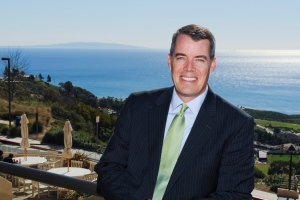By Pete Peterson
Posted: | Los Angeles Daily News
 In the stages of grief, media coverage of California voters’ low turnout in the June
primary jumped denial, and headed straight to anger and bargaining. “Something amazing
happened in California on Tuesday: Hardly anyone came out to vote,” read a recent
Washington Post piece. “I have three words to describe the primary elections held
in California this week: What the what?” wrote Jessica Levinson in HuffPo.
In the stages of grief, media coverage of California voters’ low turnout in the June
primary jumped denial, and headed straight to anger and bargaining. “Something amazing
happened in California on Tuesday: Hardly anyone came out to vote,” read a recent
Washington Post piece. “I have three words to describe the primary elections held
in California this week: What the what?” wrote Jessica Levinson in HuffPo.
Pundits have now moved on to bargaining, or, at least reasoning why so few Californians turned out to vote on June 3. In the Wall Street Journal, the Public Policy Institute of California’s Eric McGhee offered a “lack of an exciting race at the top of the ticket and no referendum or voter initiative questions on the primary ballot.” In the Los Angeles Times, Mark Z. Barabak opined that the low participation rates suggested that “Californians are relatively happy.” Deciding not to vote, he argued, was the expected solution to a mathematical equation: “Relative contentment + a sense of predestined outcome = little incentive to vote.”
While trends in low primary voter turnouts are, actually, a national issue, I hope we never move to grief’s final stage: acceptance.
For answers, we should look to those seldom mentioned in all this handwringing: actual citizens who choose not to vote. And we don’t have to depend on media speculation; there is real data to guide us.
More than a year ago, the Census Bureau surveyed Americans who were registered but did not vote in the 2012 national election in November. Working with the National Conference on Citizenship, Pepperdine’s Davenport Institute (where I work) released data showing why Californians said they did not vote.
Granted, these results are from the last presidential election, not an off-year primary. But these are some of the most comprehensive data we have on why Californians,don’t vote. We compared the reasons Californians gave for not voting with national responses and found the top reasons were:
1. “Too busy, conflicting work or school schedules”: 20 percent (CA) and 20 percent (US)
2. “Not interested, felt like my vote wouldn’t make a difference”: 12 percent (CA) vs. 16 percent (US)
3. “Illness or Disability”: 12 percent (CA) vs. 14 percent (US)
4. “Registration problems”: 10 percent (CA) vs. 6 percent (US)
5. “Didn’t like candidates or campaign issues”: 10 percent (CA) vs. 13 percent(US)
6. “Out of town or away from home”: 9 percent (CA) vs. 9 percent (US)
7. “Forgot to vote or send in absentee ballot”: 6 percent (CA) vs. 4 percent (US)
Some differences between Californian and American non-voters were striking. In our first election to use online voter registration, Californians were almost twice as likely to say that “registration problems” prevented voting. Californians were less likely than Americans to cite “rational ignorance” (“vote wouldn’t make a difference”) as a reason for not voting, and less likely than Americans to say they “didn’t like candidates.”
Notably, more than one in three Californians said they didn’t vote for some reason related to a schedule clash or simply forgetting. In this we see what Ethan Jones of the Assembly’s Elections and Redistricting Committee called the conflict between “structural” and “attitudinal barriers” to voting.
Structural barriers to voting can be addressed by the government: providing early voting options and looking at ways to simplify registration. But “attitudinal barriers” can only be met by institutions and leaders inside and outside of government: promoting civic engagement, expanding civics education, and being more creative with “get out the vote” campaigns.
Such efforts can change the calculation for non-voters. But what is the calculation? In their 1968 paper titled “The Calculus of Voting,” social scientists William Riker and Peter Ordeshook (whose work I first learned about on Medium) laid out the equation: “Probability that the user will impact the outcome of a civic decision + the benefit of a changed outcome to the user + a sense of civic duty the user gets from an action” must be greater than the “cost of civic action.”
With a dozen primary races qualifying this year as close contests, and absentee and provisional ballots being used to determine who will qualify for the November election in the state controller’s race, this year’s primary results should demonstrate to Californians that their votes count. But more work needs to be done to promote civics education and engage voters through improved uses of technology. (California was recently ranked as one of the worst states for implementation of online voter education tools.)
California also can be more intentional about decreasing the “cost of civic action” by offering early voting, and creating centrally located voting centers. To improve California’s democracy both citizens and government must be more accountable for their respective performance — or lack of it.
Pete Peterson is the executive director of the Davenport Institute for Public Engagement at Pepperdine’s School of Public Policy, and is a candidate for California secretary of state.